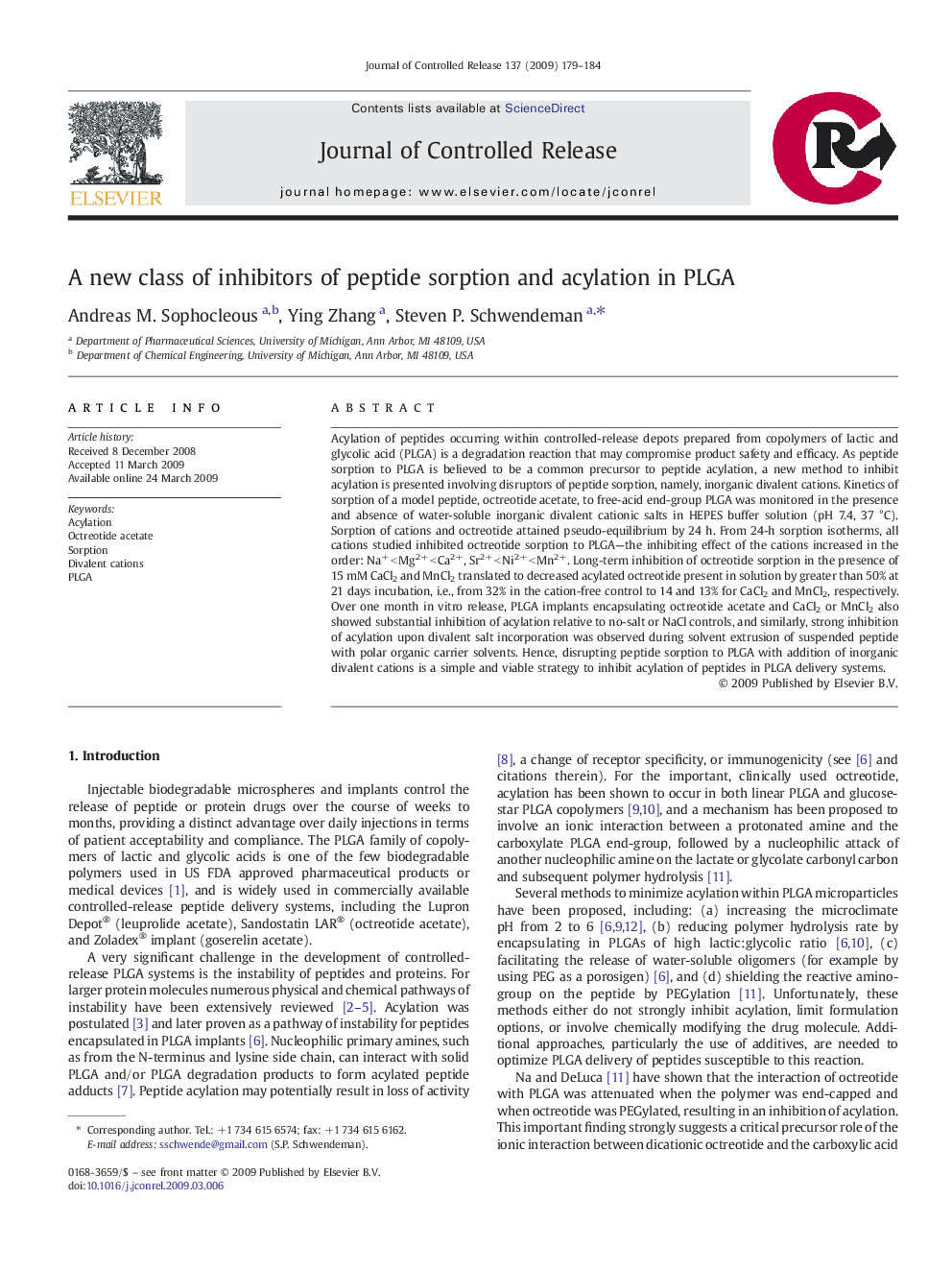| Article ID | Journal | Published Year | Pages | File Type |
|---|---|---|---|---|
| 1426117 | Journal of Controlled Release | 2009 | 6 Pages |
Acylation of peptides occurring within controlled-release depots prepared from copolymers of lactic and glycolic acid (PLGA) is a degradation reaction that may compromise product safety and efficacy. As peptide sorption to PLGA is believed to be a common precursor to peptide acylation, a new method to inhibit acylation is presented involving disruptors of peptide sorption, namely, inorganic divalent cations. Kinetics of sorption of a model peptide, octreotide acetate, to free-acid end-group PLGA was monitored in the presence and absence of water-soluble inorganic divalent cationic salts in HEPES buffer solution (pH 7.4, 37 °C). Sorption of cations and octreotide attained pseudo-equilibrium by 24 h. From 24-h sorption isotherms, all cations studied inhibited octreotide sorption to PLGA—the inhibiting effect of the cations increased in the order: Na+ < Mg2+ < Ca2+, Sr2+ < Ni2+ < Mn2+. Long-term inhibition of octreotide sorption in the presence of 15 mM CaCl2 and MnCl2 translated to decreased acylated octreotide present in solution by greater than 50% at 21 days incubation, i.e., from 32% in the cation-free control to 14 and 13% for CaCl2 and MnCl2, respectively. Over one month in vitro release, PLGA implants encapsulating octreotide acetate and CaCl2 or MnCl2 also showed substantial inhibition of acylation relative to no-salt or NaCl controls, and similarly, strong inhibition of acylation upon divalent salt incorporation was observed during solvent extrusion of suspended peptide with polar organic carrier solvents. Hence, disrupting peptide sorption to PLGA with addition of inorganic divalent cations is a simple and viable strategy to inhibit acylation of peptides in PLGA delivery systems.
Graphical abstractFigure optionsDownload full-size imageDownload as PowerPoint slide
